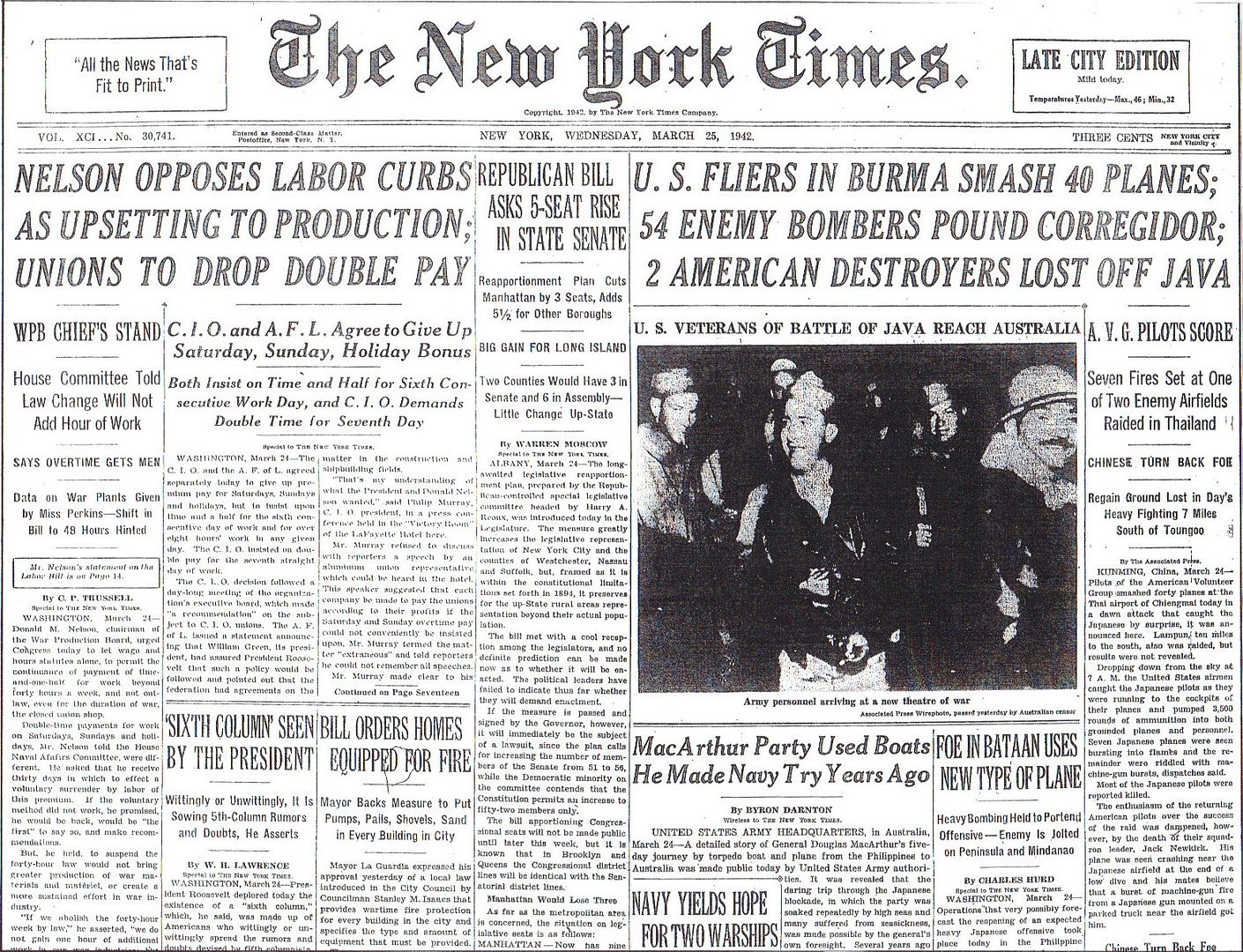
Posted on 03/25/2012 6:01:15 AM PDT by Homer_J_Simpson


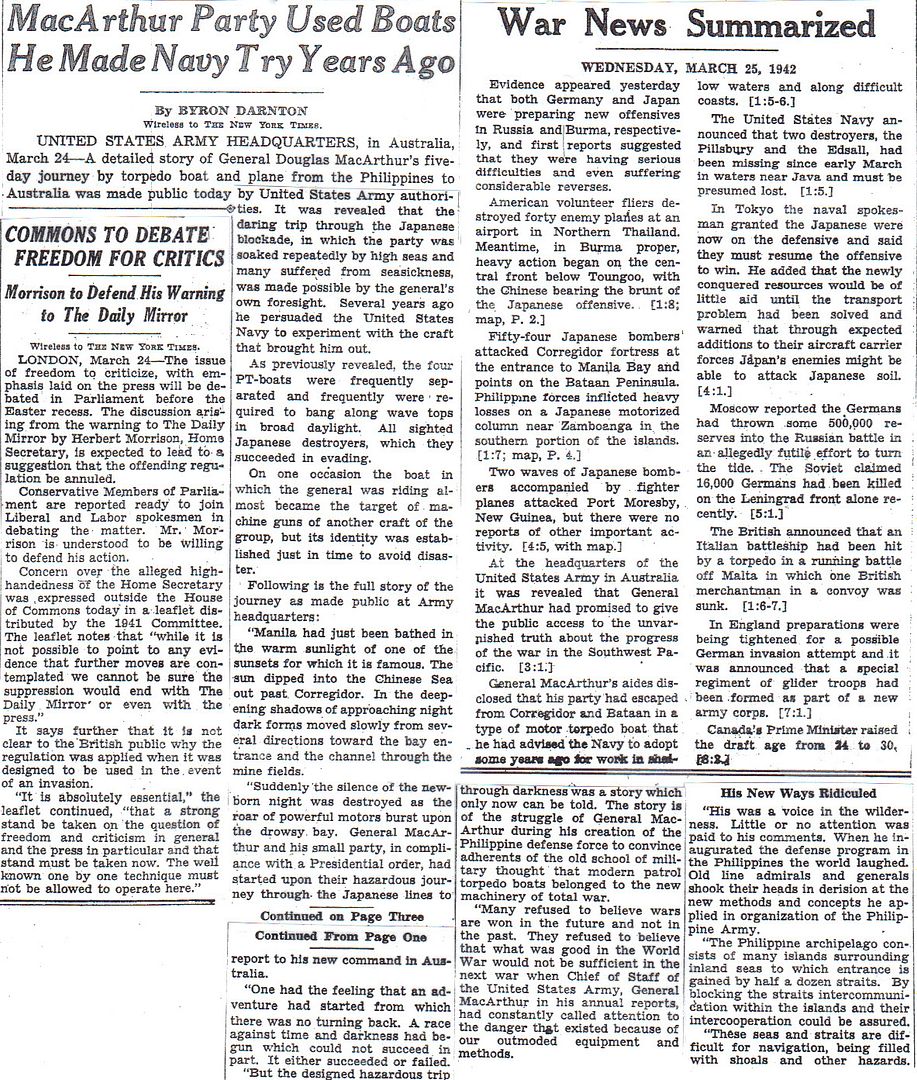
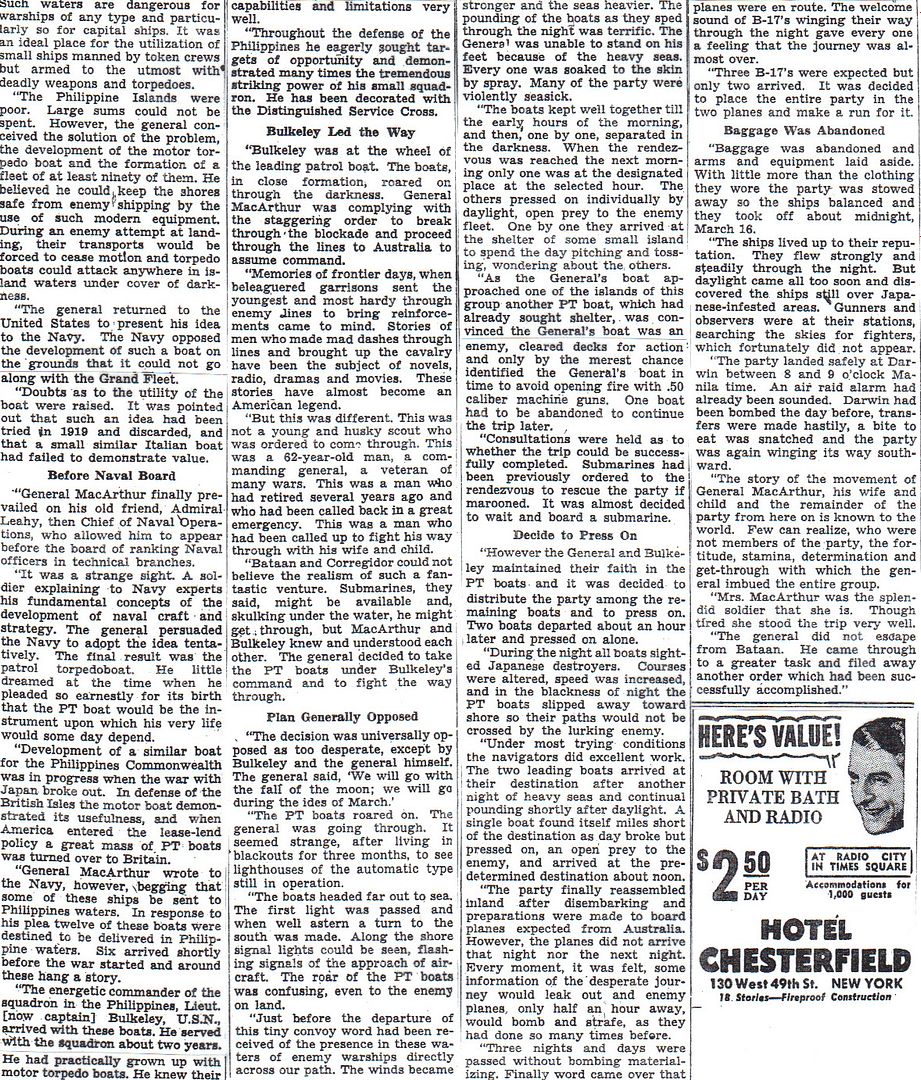

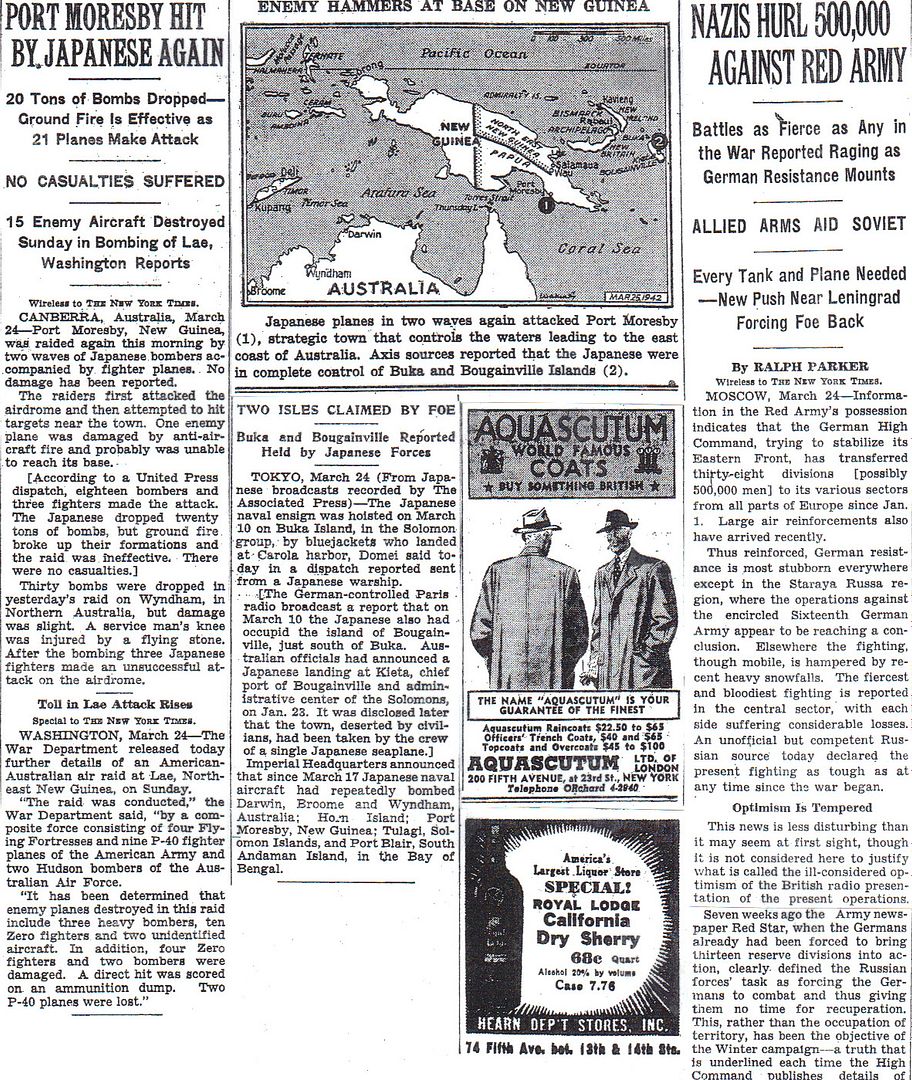
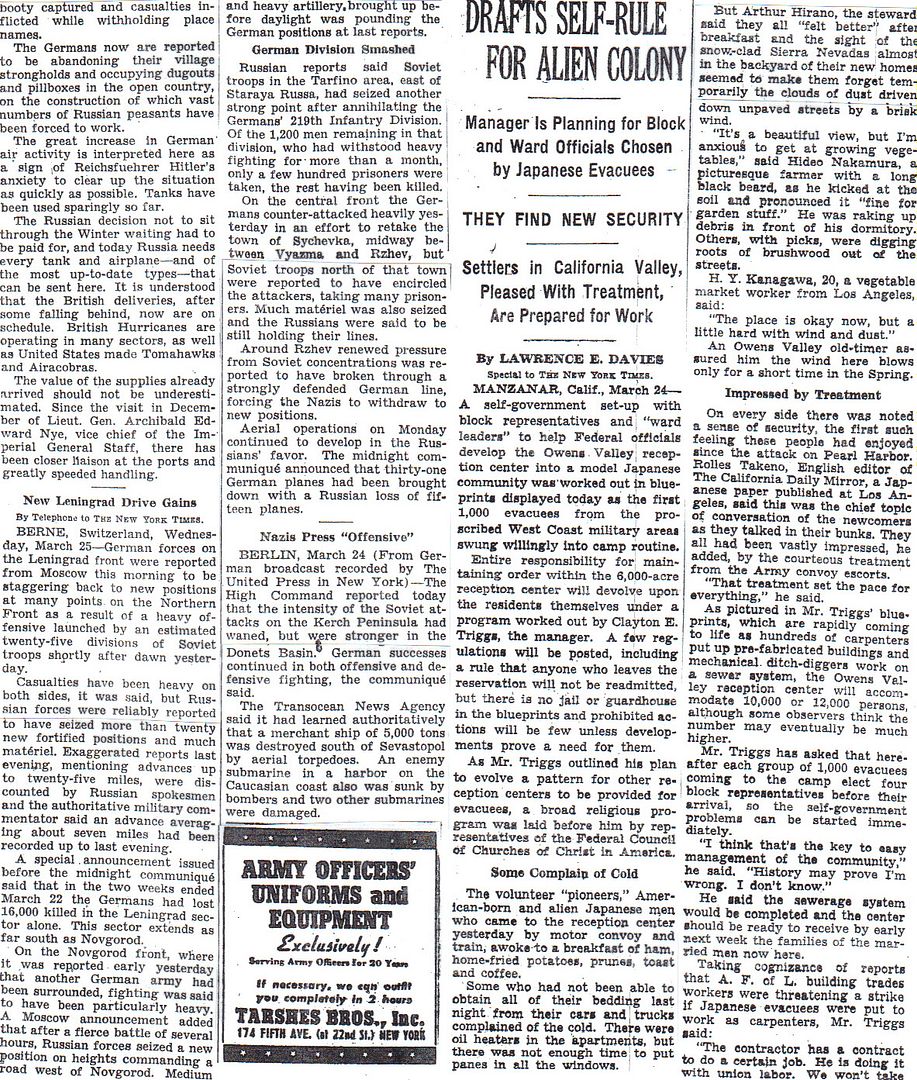
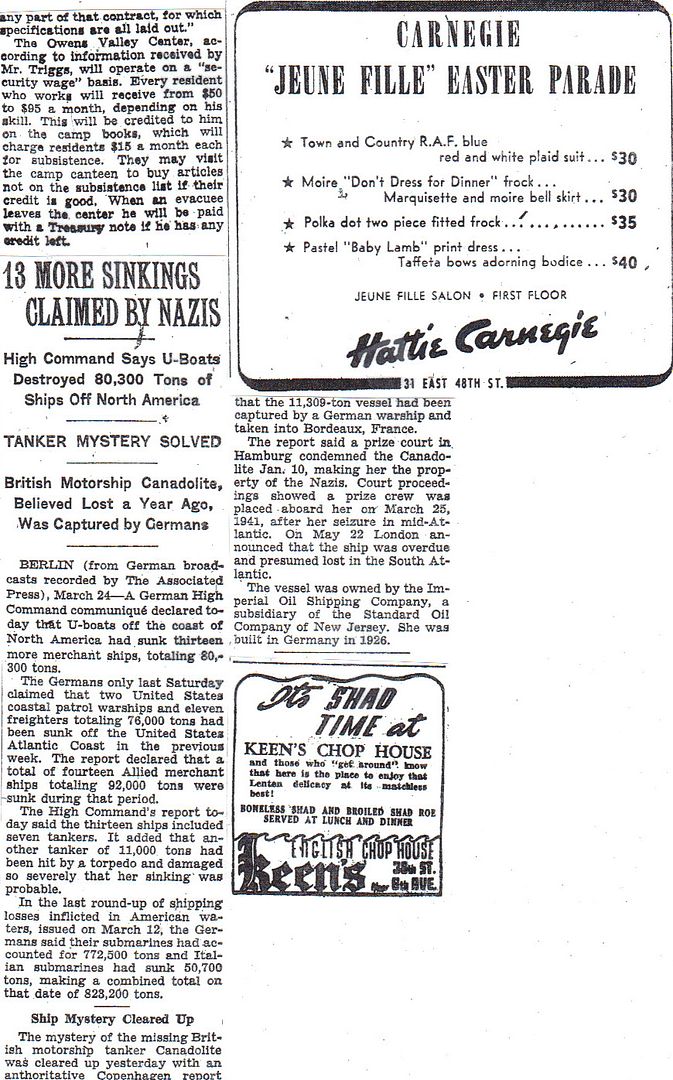
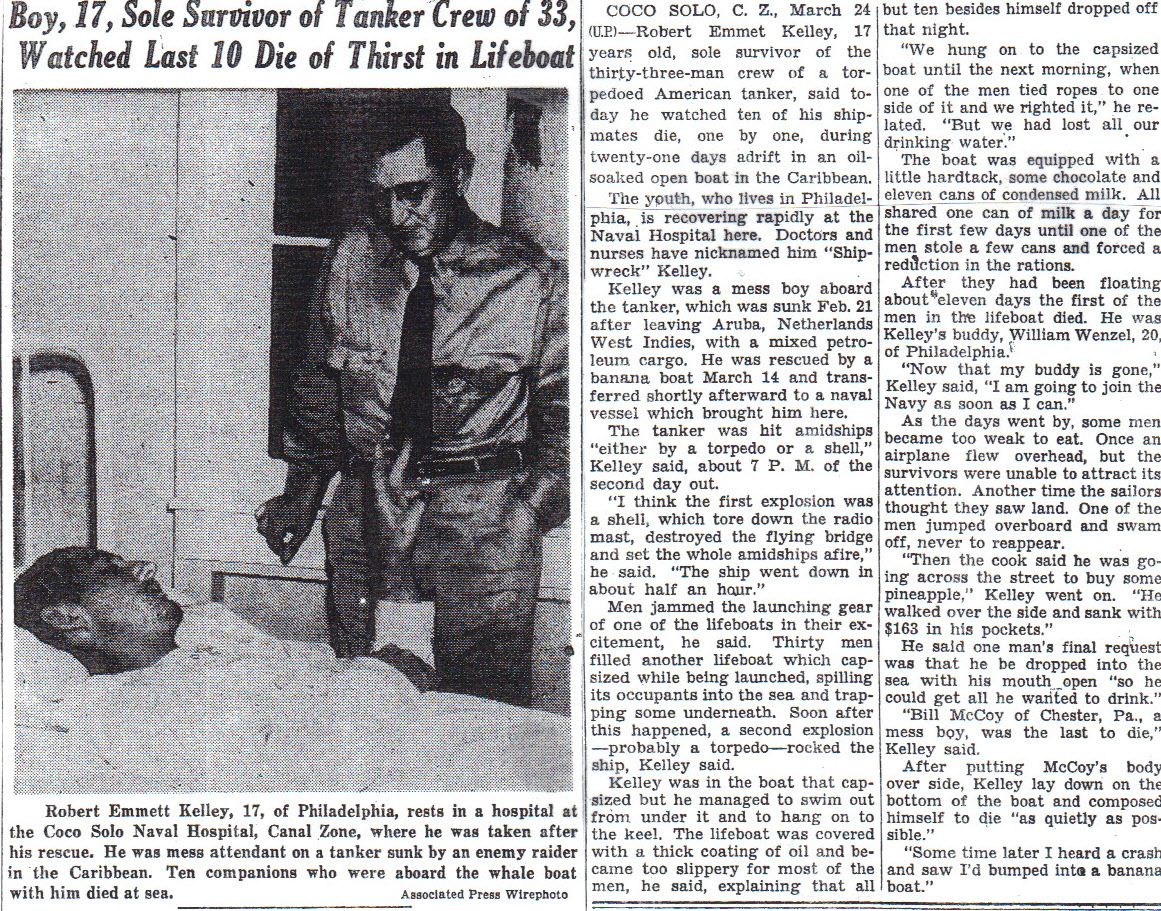
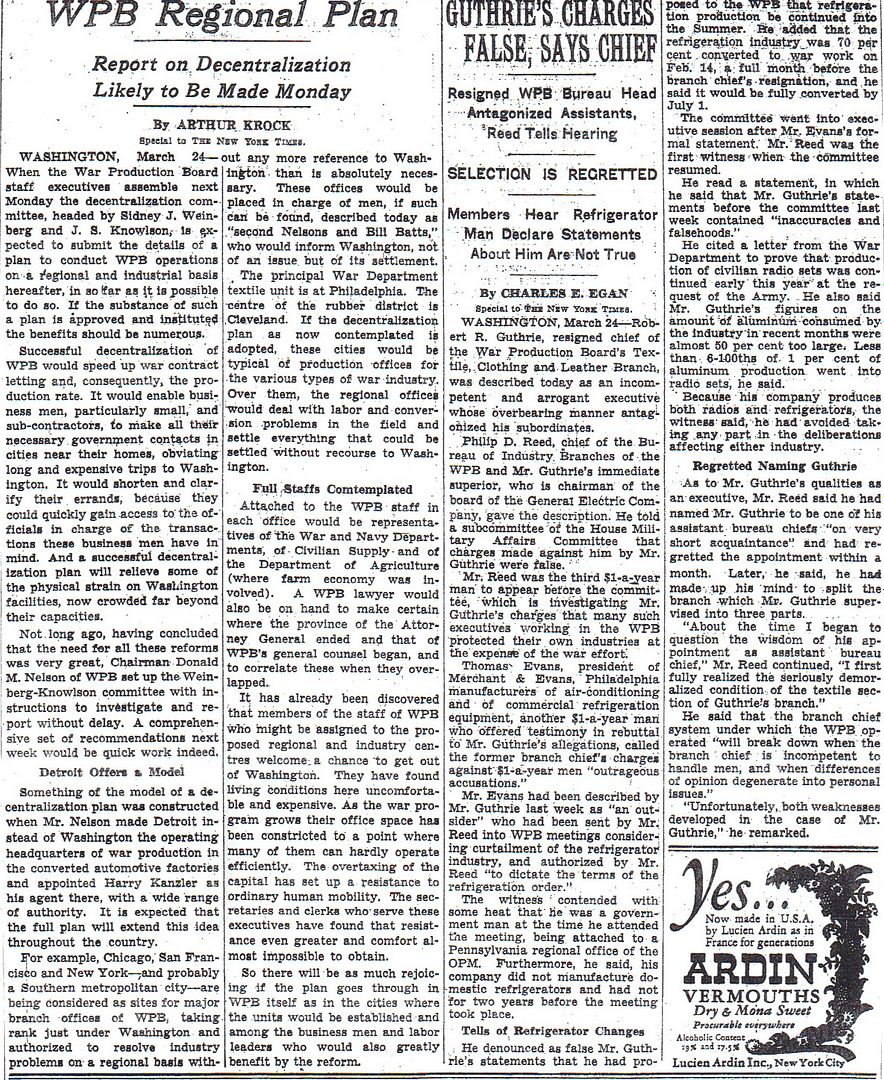
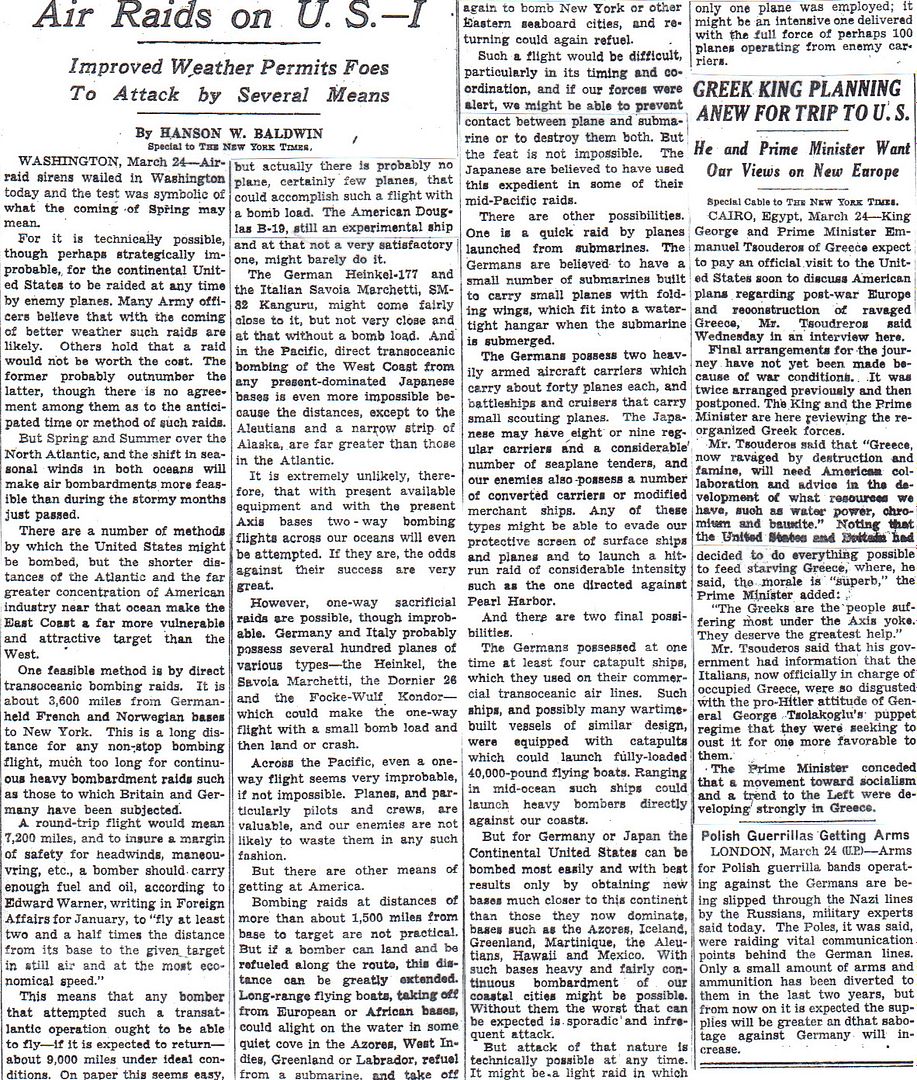
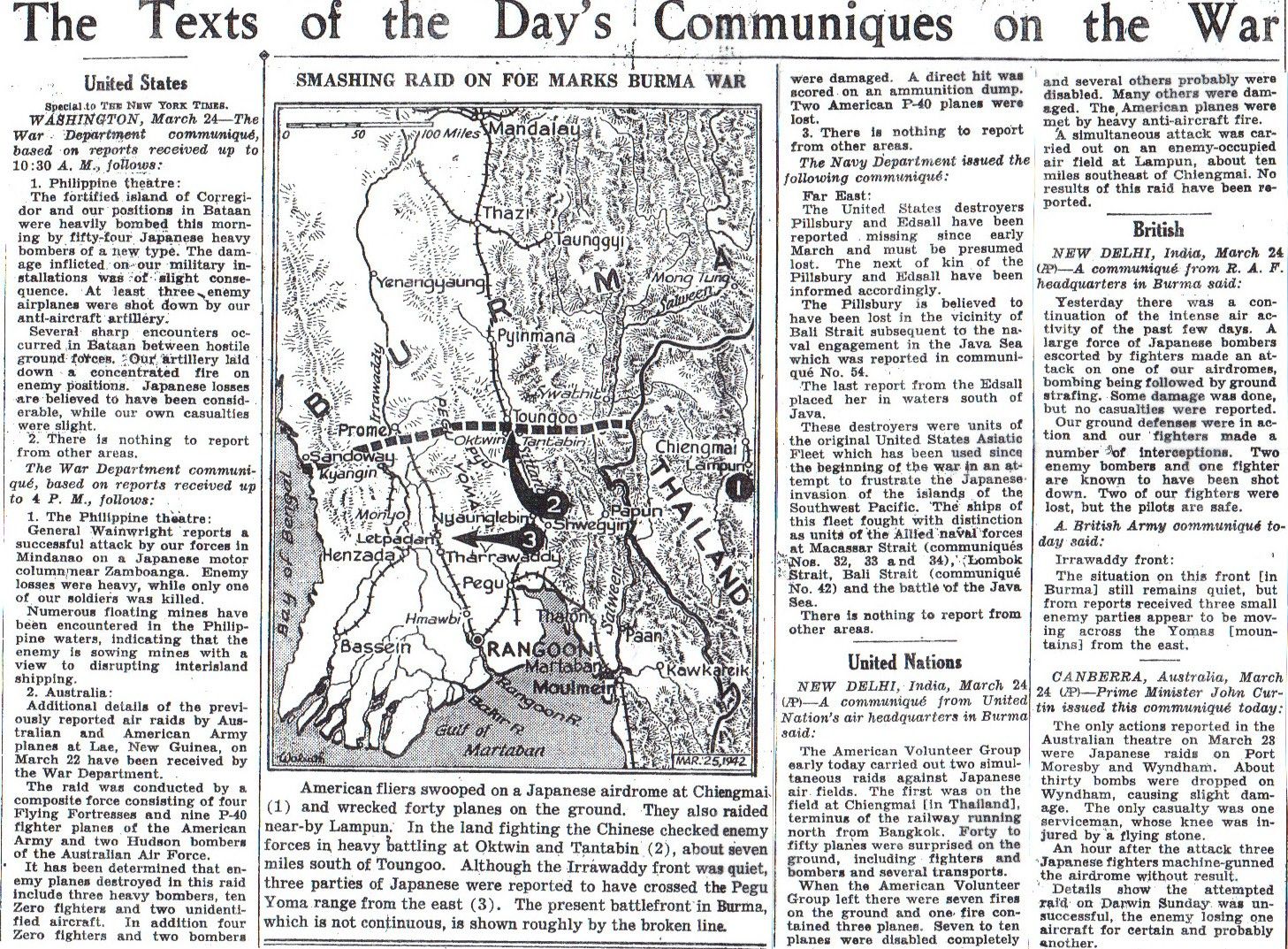
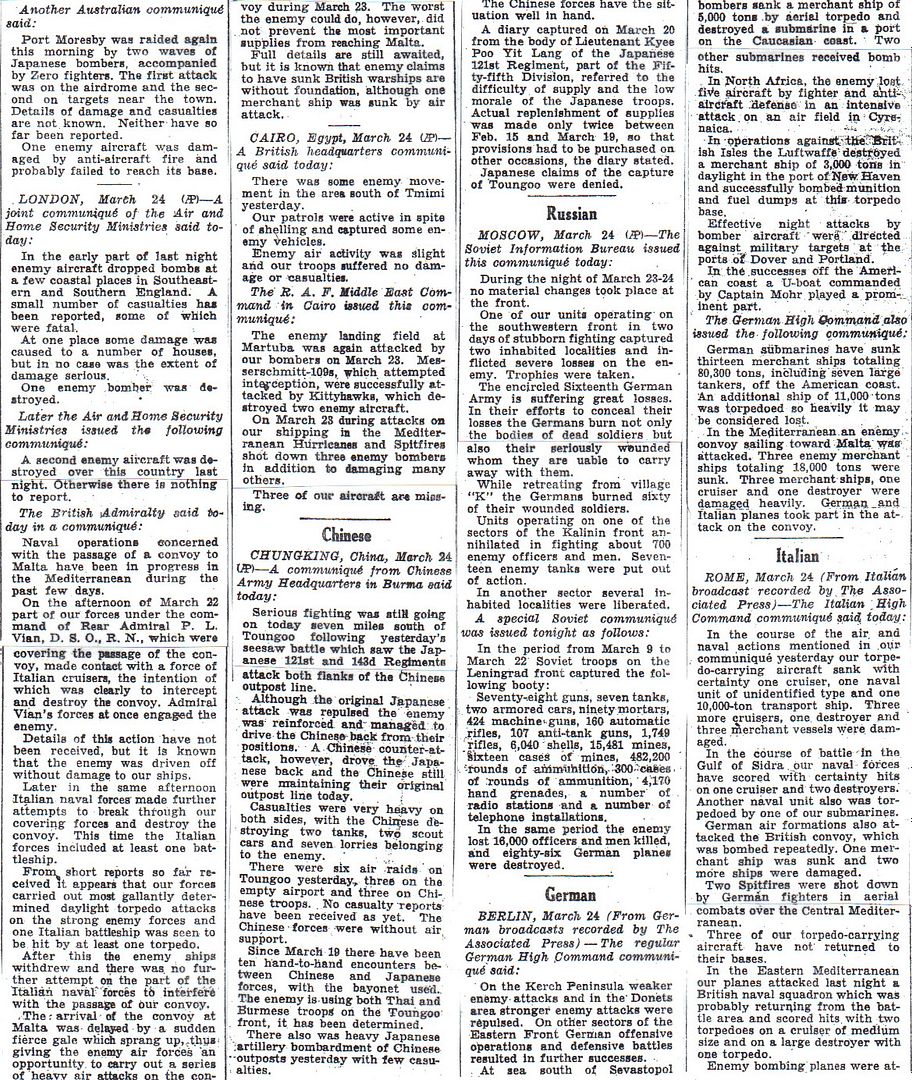
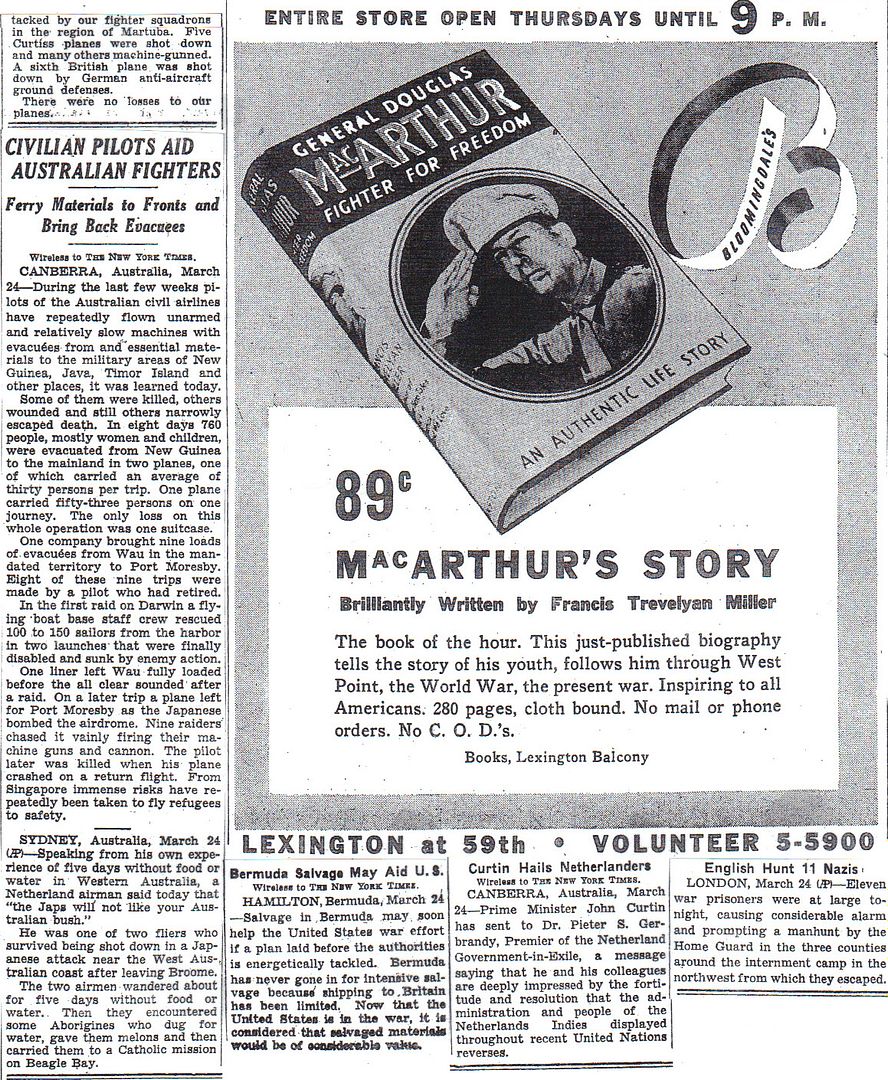
http://www.onwar.com/chrono/1942/mar42/f25mar42.htm
US warships to defend Britain
Wednesday, March 25, 1942 www.onwar.com
From the United States... Rear Admiral John Wilcox commanding Task Force 39 with the battleship Washington, two cruiser and six destroyers sail for Scapa Flow to protect British home waters for the duration of Operation Ironclad — the British invasion of Vichy French controlled Madagascar. This is a reflection of the heavy Allied losses in capital ships to Japanese action in the Pacific.
http://homepage.ntlworld.com/andrew.etherington/frame.htm
March 25th, 1942
UNITED KINGDOM: Grantham: The government has its first by-election defeat since September 1939.
FRANCE: Major Cecil P Lessig becomes the first USAAF pilot to fly a mission over France in World War II. Flying a Spitfire Mk. VB with RAF No. 64 Squadron from Hornchurch, Essex, England, Lessig participates in a 36-aircraft fighter sweep that is recalled when 50 Luftwaffe fighters challenge them. (Jack McKillop)
During the day, nine RAF Bomber Command Bostons, with fighter escort, carry out accurate bombing at Le Trait shipyard. No Bostons are lost. During the night of the 25th/26th, 26 of 27 aircraft dispatched bomb the port area at St. Nazaire, 38 aircraft dispatched lay mines off Lorient, 30 aircraft drop leaflets over France, and one bomber hits Lannion Airfield. (Jack McKillop)
NETHERLANDS: One RAF Bomber Command aircraft dispatched on the night raid on Essen, Germany, bombs Haamstede Airfield. (Jack McKillop)
GERMANY: During the night, RAF Bomber Command dispatches 254 aircraft, 192 Wellingtons, 26 Stirlings, 20 Manchesters, 9 Hampdens, 7 Lancasters, to attack Essen, the largest force sent to one target so far; 190 aircrew claim they hit the target many claiming hits on the Krupps works, but bombing photographs showed that much of the effort was drawn off by the decoy fire site at Rheinberg, 18 miles (29 kilometres) west of Essen. Essen’s report says that only nine high-explosive bombs, 700 incendiaries and 1,627 leaflets were dropped there. One house was destroyed and two seriously damaged. Five people were killed and 11 injured.. Nine aircraft, five Manchesters (out of the 20 dispatched), three Wellingtons, and a Hampden, are lost. Other targets bombed include Duisburg (by seven aircraft), Oberhausen (by two aircraft) while individual aircraft bomb Gladbeck and Hamborn. (Jack McKillop)
BURMA: The Chinese 200th Division is virtually besieged in Toungoo. Elements of the Temporary 55th Division (T-55th) of the Chinese 6th Army, arrive north of the town but do not attack. The Burma I Corps is ordered to concentrate in the Prome-Allanmyo area. (Jack McKillop)
AUSTRALIA: An advanced flight echelon of B-26s assigned to the 22d Bombardment Group (Medium) arrives at Archerfield Airdrome, Brisbane via the Pacific ferry route. (Jack McKillop)
General Douglas MacArthur finally consents to see Lieutenant General George Brett who commands all Allied air units in Australia. Brett later recalls, “MacArthur went into a dissertation on the air forces. It was evident that he had nothing but contempt and criticism for them. ‘They lack discipline, organization, purposeful intent,’ he said.” Brett’s assessment is that the key to MacArthur’s speech is that the Philippine campaign had been lost-but “through no fault of his.” (Jack McKillop)
Jean MacArthur goes shopping in Melbourne, Victoria, to buy clothes, and finds out that most Australians have no idea of what they’ve been through. The Myer Emporium salesgirl looks her over, shakes her head sadly, and says, “SSW. Well, I don’t know whether we’ve got anything.” What does SSW mean? “Small-sized woman. They’re hard to fit.” Another shopper recognizes Mrs. MacArthur, and says, sympathetically, “Won’t your clothes soon be arriving from Manila?” (Jack McKillop)
An advance air echelon of the USAAF 22d Bombardment Group (Medium) equipped with B-26 Marauders arrives at Archefield Airdrome near Brisbane, Queensland, via the South Pacific ferry route. These are the first B-26s to reach an active war zone. The ground echelon has been in Australia for a month. (Jack McKillop)
NEW GUINEA: On 21 March, RAAF No. 75 Squadron arrived at Seven Mile Aerodrome at Port Moresby with 17 Curtiss Kittyhawk Mk. IA (= USAAF P-40E) fighters. Today, only seven of the original aircraft are operational. (Jack McKillop)
PACIFIC OCEAN: Three Japanese merchant ships are sunk by U.S. submarines: (1) USS Drum (SS-228) sinks a cargo ship about 120 miles (193 kilometres) south southwest of Tokyo, Japan; (2) USS Pompano (SS-181) sinks a tanker about 70 miles (113 kilometres) northwest of Naha, Okinawa; and (3) USS Tautog (SS-199) sinks a transport about 460 miles (740 kilometres) southeast of Ulithi Atoll, Caroline Islands. (Jack McKillop)
SOCIETY ISLANDS: The U.S. 162d Infantry of the 41st Infantry Division, arrives at the 14 square mile (36 square kilometer) Bora Bora Island in French Polynesia. Bora Bora Island is about 2,650 miles (6683 kilometres) south southeast of Honolulu, Territory of Hawaii. (Jack McKillop)
TERRITORY OF ALASKA: ALEUTIAN ISLANDS: Japanese submarine HIJMS I-9 launches a Yokosuka E14Y1, Navy Type 0 Small Reconnaissance Seaplane (later assigned the Allied Code Name “Glen”), to reconnoiter Kiska and Amchitka Islands. (Jack McKillop)
CANADA: British Columbia Security Commission initiates scheme of forcing men to road camps and women and children to “ghost town” detention camps. (Jack McKillop)
U.S.A.: The 77th Infantry Division of the United States Army is activated at Fort Jackson, South Carolina. (Marc James Small)
GULF OF MEXICO: An unarmed U.S. freighter is torpedoed and shelled by German submarine U-103 about 75 miles (121 kilometres) west northwest of Jamaica, and abandoned. U-103 surfaces and her commanding officer asks the Americans for the name and speed of their ship, and if all of her men have been accounted for, before he provides them with cigarettes. The freighter sinks early the following morning, after which time the U-boat departs. (Jack McKillop)
ATLANTIC OCEAN: The destroyer USS Blakely (DD-150) is torpedoed by German submarine U-156 off Martinique, French West Indies. The explosion carries away 60 feet (18 meters) of her bow. Six men are killed and 21 wounded, but the ship makes it to Port de France, Martinique, for emergency repairs. (Jack McKillop)
German planes attack convoy PQ 16 as it proceeds toward Murmansk, USSR, from Reykjavik, Iceland; an armed U.S. freighter is damaged by near-misses and she leaves the convoy under tow of British trawler HMS Northern Spray. (Jack McKillop)
bump
Bump!
Baldwin’s P11 article about long range bombing is interesting in that at this stage of the war, the U.S. had a plane in the B-19 which while experimental, could in theory have bombed Tokyo from Australia, Midway and the Aleutians.
The XB-19 was the first American plane to have a wingspan over 200 feet. It was designed to carry 37,000 lbs of ordinance (a little over 2.5 times that of the B-17). It was said to have a maximum range of 7,750 miles.
Only one was built and after testing it was converted into a cargo transport which could carry either 123 troops or 56,000 lbs. of freight. It was developed by Douglas based off of the lessons learned from their competitor’s (Boeing) XB-15 which was also a long range design. Interestingly enough, the one example of the XB-15 built was also converted into a cargo transport called the XC-105.
It was definitely a big plane.

Disclaimer: Opinions posted on Free Republic are those of the individual posters and do not necessarily represent the opinion of Free Republic or its management. All materials posted herein are protected by copyright law and the exemption for fair use of copyrighted works.